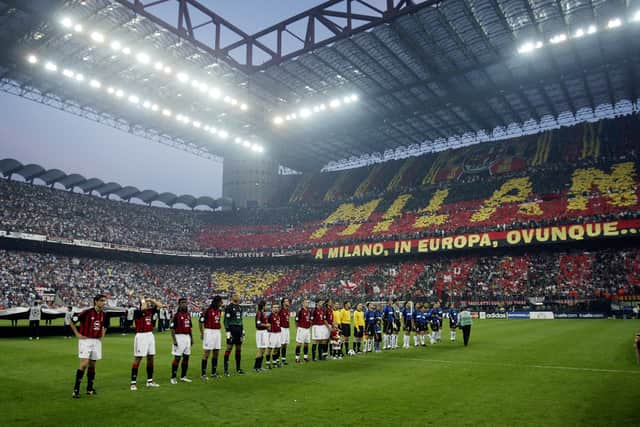New Champions League format: changes explained, how many teams qualify
and live on Freeview channel 276
The Champions League is set to experience wholesale changes in the near future, with the introduction of four additional teams and two extra games.
The new format comes into effect at the start of the 2024/25 season. The big shake-up is the first to take place in Europe’s elite competition in 20 years and it is likely to have a major impact on many top leagues across the continent.
Advertisement
Hide AdAdvertisement
Hide AdThe upcoming season is the final campaign to feature a group stage in the traditional sense and future editions of the competition will follow a “Swiss model” in which teams will be placed in a league table.
The changes have divided opinion across the footballing world and many football fans have grown accustomed to the traditional format which has been in place since 2003.
But what can fans expect from the new Champions League format and how many places are up for grabs in the Premier League? Here is everything you need to know.
Why is the Champions League format changing?


Talks over a dramatic reform to the Champions League began in 2019.
Advertisement
Hide AdAdvertisement
Hide AdIn recent years there has been a great deal of political manoeuvring from some of Europe’s biggest teams which resulted in the controversy of the failed European Super League attempt in April 2021.
The proposal, which was condemned by many fans in the football world, would have essentially made the Champions League - a closed shop with the same teams competing each year.
The Super League efforts resulted in widespread protests from many football supporters including Man Utd.
UEFA president Alexander Ceferin described the Super League as a “non-football project” but claims the new format strikes a competitive balance whilst generating solid revenues for clubs, leagues and grassroots football.
How will the new format work?


Advertisement
Hide AdAdvertisement
Hide AdThe number of teams competing in the Champions League increases from 32 to 36 from 2024/25 onwards. This means that there are now 189 matches instead of 125.
The group stage will be replaced by a league phase which is otherwise known as the Swiss model.
Each team will compete in a total of eight matches in the league phase, with four home games and four away games.
There is expected to be an element of seeding in place to decide the fixtures, as we have seen in previous competitions with teams in the top seed earning a more favourable draw.
Advertisement
Hide AdAdvertisement
Hide AdThe top eight placed sides in the league progress automatically into the round of 16. Those finishing between ninth and 24th will then compete in a two legged play-off to determine who progresses to the knockout stage of the competition.
From the round of 16 onwards the tournament will return to a familiar two-legged knockout competition, as has been the case since 2003.
How many Champions League places are there for England under the new format?


Under the current format there are four Champions League places up for grabs.
Last year, Manchester United and Newcastle edged out Liverpool to secure a place in the top four, where they joined title chasing Arsenal and champions Manchester City.
Advertisement
Hide AdAdvertisement
Hide AdHowever, a number of extra places could be up for grabs as a result of the changes and two of the extra four slots in the competition will be awarded to nations whose clubs achieve the best collective performance in the season before.
To work this out the total points earned will be divided by the number of sides competing in European club competitions.
In three of the past four seasons a Premier League club would have earned an additional place in the Champions League.
In theory, the Premier League could end up with a maximum of seven Champions League teams, if the winners of the Europa League and the Champions League somehow failed to qualify due to their league position.
What other changes have been introduced?


Advertisement
Hide AdAdvertisement
Hide AdAnother major change to note in the Champions League is that teams from the same country are now able to face each other in the early knockout stages - meaning we could see an all English-affair in the round of 16.
Domestic clashes are currently blocked until the quarter-final stage under the current regulations.
How do the changes affect other European competitions?
The Europa League and Europa Conference League will experience similar format changes from 2024 onwards and both will start with 36 teams.
The Europa League has abandoned the traditional group stage model in favour of an eight game league phase.
Similarly the Europa Conference League follows a similar format with six matches in their league stage.
Comment Guidelines
National World encourages reader discussion on our stories. User feedback, insights and back-and-forth exchanges add a rich layer of context to reporting. Please review our Community Guidelines before commenting.
